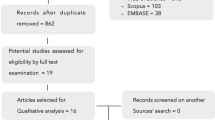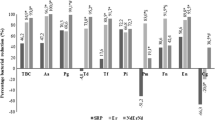Abstract
To evaluate the efficacy of Er,Cr:YSGG laser irradiation on the removal of zirconia hybrid abutment crowns (HAC) from ti-bases and investigate the effects of laser output power and zirconia generation on debonding time and fracture resistance of crowns. A hundred monolithic zirconia HACs were fabricated by using 4Y-TZP and 5Y-TZP materials and subsequently cemented onto the ti-bases with a resin luting agent. Each zirconia group was further divided into 5 subgroups according to the debonding procedure as control (no debonding), 4.5 W-, 5 W-, and 6 W-laser irradiation, heat processed (n = 10). Er,Cr:YSGG laser (Waterlase MD; Biolase Technology Inc., Irvine, CA) was used on a noncontact hard tissue mode at a 20-Hz repetition rate and 140-μs pulse duration with 50% water and 50% air. Debonding durations were recorded for each specimen, and modes of failure were investigated. Crowns were re-cemented on their corresponding ti-bases, and HACs were subjected to fracture strength test. Debonding duration and fracture strength data were statistically analyzed. Fractured zirconia crown surfaces of ti-bases were examined under the scanning electron microscope. 5Y-TZP crowns were debonded from ti-bases in significantly lower durations in comparison with 4Y-TZP crowns for all output powers [4.5 W (P = 0.001), 5 W (P = 0.002), and 6 W (P = 0.0014)]. For both 4Y-TZP and 5Y-TZP materials, debonding duration was significantly decreased with the increase in laser output power (P ≤ 0.001 for 4Y- and 5Y-TZP). In comparison with 4Y-TZP heat-processed group to the 4Y-TZP laser-irradiated groups, no significant differences were detected in terms of fracture strength (P > 0.05), while heat-processed crowns exhibited significantly lower fracture strength values than those of control group (P = 0.006). All debonding procedures significantly reduced fracture strength values of 5Y-TZP crowns in comparison with the control group (P ≤ 0.001). The common failure type was the adhesive failure between the zirconia crown and resin cement for all groups. SEM evaluation showed no visible damage caused by laser irradiation or heat application. The use of Er,Cr:YSGG laser irradiation is an efficient way to retrieve zirconia crowns from ti-bases. The higher the output power of the laser, the shorter the bonding procedure. The debonding duration and fracture strength of the crown were affected by the zirconia generation. Debonded 5Y-TZP zirconia crowns should not be reused due to the decrease in mechanical strength values.




Similar content being viewed by others
References
Kelly JR, Rungruanganunt P (2016) Fatigue behavior of computer-aided design/computer-assisted manufacture ceramic abutments as a function of design and ceramics processing. Int J Oral Maxillofac Implants 31:601–609. https://doi.org/10.11607/jomi.4698
Elshiyab SH, Nawafleh N, Walsh L et al (2018) Fracture resistance and survival of implant-supported, zirconia-based hybrid-abutment crowns: influence of aging and crown structure. J Investig Clin Dent 9:12355. https://doi.org/10.1111/jicd.12355
Pitta J, Fehmer V, Sailer I et al (2018) Monolithic zirconia multiple-unit implant reconstructions on titanium bonding bases. Int J Comput Dent 21:163–171
Sailer I, Asgeirsson AG, Thoma DS et al (2018) Fracture strength of zirconia implant abutments on narrow diameter implants with internal and external implant abutment connections: a study on the titanium resin base concept. Clin Oral Implants Res 29:411–423. https://doi.org/10.1111/clr.13139
Nouh I, Kern M, Sabet AE et al (2019) Mechanical behavior of posterior all-ceramic hybrid-abutment-crowns versus hybrid-abutments with separate crowns-A laboratory study. Clin Oral Implants Res 30:90–98. https://doi.org/10.1111/clr.13395
Pitta J, Burkhardt F, Mekki M et al (2021) Effect of airborne-particle abrasion of a titanium base abutment on the stability of the bonded interface and retention forces of crowns after artificial aging. J Prosthet Dent 126:214–221. https://doi.org/10.1016/j.prosdent.2020.06.013
Elsayed A, Wille S, Al-Akhali M, Kern M (2018) Effect of fatigue loading on the fracture strength and failure mode of lithium disilicate and zirconia implant abutments. Clin Oral Implants Res 29:20–27. https://doi.org/10.1111/clr.13034
Stawarczyk B, Keul C, Eichberger M et al (2017) Three generations of zirconia: from veneered to monolithic. Part I Quintessence Int 48:369–380. https://doi.org/10.3290/j.qi.a38057
Jansen JU, Lümkemann N, Letz I et al (2019) Impact of high-speed sintering on translucency, phase content, grain sizes, and flexural strength of 3Y-TZP and 4Y-TZP zirconia materials. J Prosthet Dent 122:396–403. https://doi.org/10.1016/j.prosdent.2019.02.005
Johansson C, Kmet G, Rivera J et al (2014) Fracture strength of monolithic all-ceramic crowns made of high translucent yttrium oxide-stabilized zirconium dioxide compared to porcelain-veneered crowns and lithium disilicate crowns. Acta Odontol Scand 72:145–153. https://doi.org/10.3109/00016357.2013.822098
Marchack BW, Sato S, Marchack CB et al (2011) Complete and partial contour zirconia designs for crowns and fixed dental prostheses: a clinical report. J Prosthet Dent 106:145–152. https://doi.org/10.1016/S0022-3913(11)60112-1
Kwon SJ, Lawson NC, McLaren EE et al (2018) Comparison of the mechanical properties of translucent zirconia and lithium disilicate. J Prosthet Dent 120:132–137. https://doi.org/10.1016/j.prosdent.2017.08.004
Yan J, Kaizer MR, Zhang Y (2018) Load-bearing capacity of lithium disilicate and ultra-translucent zirconias. J Mech Behav Biomed Mater 88:170–175. https://doi.org/10.1016/j.jmbbm.2018.08.023
Morford CK, Buu NC, Rechmann BM et al (2011) Er:YAG laser debonding of porcelain veneers. Lasers Surg Med 43:965–974. https://doi.org/10.1002/lsm.21144
Gurney ML, Sharples SD, Phillips WB et al (2016) Using an Er, Cr:YSGG laser to remove lithium disilicate restorations: a pilot study. J Prosthet Dent 115:90–94. https://doi.org/10.1016/j.prosdent.2015.08.003
Rechmann P, Buu NC, Rechmann BM et al (2015) Laser all-ceramic crown removal and pulpal temperature–a laboratory proof-of-principle study. Lasers Med Sci 30:2087–2093. https://doi.org/10.1007/s10103-015-1738-1
Zhang Y, Rocca JP, Fornaini C et al (2018) Erbium-doped, yttrium-aluminum-garnet laser debonding of porcelain laminate veneers: an ex vivo study. Contemp Clin Dent 9:570–573. https://doi.org/10.4103/ccd.ccd_632_18
Alikhasi M, Monzavi A, Ebrahimi H et al (2019) Debonding time and dental pulp temperature with the Er, Cr: YSGG laser for debonding feldespathic and lithium disilicate veneers. J Lasers Med Sci 10:211–214. https://doi.org/10.15171/jlms.2019.34
Golob-Deeb J, Bencharit S, Dalal N et al (2019) Using Er:YAG laser to remove lithium disilicate crowns from zirconia implant abutments: an in vitro study. PLoS ONE 14:0223924. https://doi.org/10.1371/journal.pone.0223924
Shah K, McGlumphy E, Lee DJ et al (2021) Laser retrieval of cemented zirconia single unit implant restoration: a pilot study: part I - force values. Int J Prosthodont Online ahead of print. https://doi.org/10.11607/ijp.6345
Golob-Deeb J, Skrjanc L, Kanduti D et al (2021) Evaluation of Er:YAG and Er, Cr:YSGG laser irradiation for the debonding of prefabricated zirconia crowns. Adv Clin Exp Med 30:7–15. https://doi.org/10.17219/acem/127686
Elkharashi A, Grzech-Leśniak K, Golob-Deeb J et al (2020) Exploring the use of pulsed erbium lasers to retrieve a zirconia crown from a zirconia implant abutment. PLoS ONE 15:0233536. https://doi.org/10.1371/journal.pone.0233536
Grzech-Leśniak K, Bencharit S, Dalal N et al (2019) In vitro examination of the use of Er:YAG laser to retrieve lithium disilicate crowns from titanium implant abutments. J Prosthodont 28:672–676. https://doi.org/10.1111/jopr.13077
Grzech-Leśniak K, Bencharit S, Skrjanc L et al (2020) Utilization of Er:YAG laser in retrieving and reusing of lithium disilicate and zirconia monolithic crowns in natural teeth: an in vitro study. Appl Sci 10:4357. https://doi.org/10.3390/app10124357
Ghazanfari R, Azimi N, Nokhbatolfoghahaei H et al (2019) Laser aided ceramic restoration removal: a comprehensive review. J Lasers Med Sci 10:86–91. https://doi.org/10.15171/jlms.2019.14
Rechmann P, Buu NC, Rechmann BM et al (2014) Laser all-ceramic crown removal-a laboratory proof-of-principle study-phase 2 crown debonding time. Lasers Surg Med 46:636–643. https://doi.org/10.1002/lsm.22280
Tocchio RM, Williams PT, Mayer FJ et al (1993) Laser debonding of ceramic orthodontic brackets. Am J Orthod Dentofacial Orthop 103:155–162. https://doi.org/10.1016/S0889-5406(05)81765-2
Pich O, Franzen R, Gutknecht N et al (2015) Laser treatment of dental ceramic/cement layers: transmitted energy, temperature effects and surface characterisation. Lasers Med Sci 30:591–597. https://doi.org/10.1007/s10103-013-1340-3
Sari T, Tuncel I, Usumez A et al (2014) Transmission of Er:YAG laser through different dental ceramics. Photomed Laser Surg 32:37–41. https://doi.org/10.1089/pho.2013.3611
Cifuentes HG, Gómez JC, Guerrero ANL et al (2020) Effect of an Er, Cr:YSGG laser on the debonding of lithium disilicate veneers with four different thicknesses. J Lasers Med Sci 11:464–468. https://doi.org/10.34172/jlms.2020.72
Sayed Sohail A, Elmahallawi O, Sedky Y et al (2021) The effect of different power settings of Er, Cr:YSGG laser on tooth structure chemistry and topography and time of debonding of laminate veneers: “in vitro study”. J Fundam Clin Res 1:17–32
Moon JE, Kim SH, Lee JB, Ha SR et al (2011) The effect of preparation order on the crystal structure of yttria-stabilized tetragonal zirconia polycrystal and the shear bond strength of dental resin cements. Dent Mater 27:651–663. https://doi.org/10.1016/j.dental.2011.03.005
Monaco C, Tucci A, Esposito L et al (2013) Microstructural changes produced by abrading Y-TZP in presintered and sintered conditions. J Dent 41:121–126. https://doi.org/10.1016/j.jdent.2012.06.009
Kurtulmus-Yilmaz S, Aktore H (2018) Effect of the application of surface treatments before and after sintering on the flexural strength, phase transformation and surface topography of zirconia. J Dent 72:29–38. https://doi.org/10.1016/j.jdent.2018.02.006
International Standard ISO 14801 Geneva (2016) Dentistry-implants-dynamic fatigue test for endosseous dental implants. Switzerland, Geneva
Zhang F, Van Meerbeek B, Vleugels J (2020) Importance of tetragonal phase in high-translucent partially stabilized zirconia for dental restorations. Dent Mater 36:491–500. https://doi.org/10.1016/j.dental.2020.01.017
Jerman E, Lümkemann N, Eichberger M et al (2021) Evaluation of translucency, Marten’s hardness, biaxial flexural strength and fracture toughness of 3Y-TZP, 4Y-TZP and 5Y-TZP materials. Dent Mater 37:212–222. https://doi.org/10.1016/j.dental.2020.11.007
Karagoz-Yildirak M, Gozneli R (2020) Evaluation of rebonding strengths of leucite and lithium disilicate veneers debonded with an Er:YAG laser. Lasers Med Sci 35:853–860. https://doi.org/10.1007/s10103-019-02872-8
St Germain HA Jr, St Germain TH (2015) Shear bond strength of porcelain veneers rebonded to enamel. Oper Dent 40:112–121. https://doi.org/10.2341/14-123-L
Brice DA, Samimi P, Ghamarian I et al (2016) Oxidation behavior and microstructural decomposition of Ti-6Al-4V and Ti-6Al-4V-1B sheet. Corrosion Sci 112:338–346. https://doi.org/10.1016/j.corsci.2016.07.032
Spies BC, Zhang F, Wesemann C et al (2020) Reliability and aging behavior of three different zirconia grades used for monolithic four-unit fixed dental prostheses. Dent Mater 36:e329–e339. https://doi.org/10.1016/j.dental.2020.08.002
Chevalier J, Gremillard L, Deville S (2007) Low-temperature degradation of zirconia and implications for biomedical implants. Annu Rev Mater Res 37:1–32. https://doi.org/10.1146/annurev.matsci.37.052506.084250
Nakamura K, Harada A, Kanno T et al (2015) The influence of low-temperature degradation and cyclic loading on the fracture resistance of monolithic zirconia molar crowns. J Mech Behav Biomed Mater 47:49–56. https://doi.org/10.1016/j.jmbbm.2015.03.007
Yoshimura M, Noma T, Kawabata K et al (1989) Role of H2O on the degradation process of Y-TZP. In: Sōmiya S (eds) Hydrothermal Reactions for Materials Science and Engineering 6:396–398. https://doi.org/10.1007/978-94-009-0743-0_67
Tak O, Sari T, Arslan Malkoç M et al (2015) The effect of transmitted Er:YAG laser energy through a dental ceramic on different types of resin cements. Lasers Surg Med 47:602–607. https://doi.org/10.1002/lsm.22394
Diaci J, Gaspirc B (2012) Review comparison of Er:YAG and Er, Cr:YSGG lasers used in dentistry. J Laser Health Acad 1:1–13
Zhang X, Dong H, Guo C et al (2021) Effects of laser debonding treatment on the optical and mechanical properties of all-ceramic restorations. Lasers Med Sci 36:1497–1504. https://doi.org/10.1007/s10103-020-03219-4
Author information
Authors and Affiliations
Corresponding author
Ethics declarations
Ethical approval
This article does not contain any studies with human participants or animals performed by any of the authors.
Conflict of interest
The authors declare no competing interests.
Additional information
Publisher's note
Springer Nature remains neutral with regard to jurisdictional claims in published maps and institutional affiliations.
Rights and permissions
About this article
Cite this article
Birand, C., Kurtulmus-Yilmaz, S. Evaluation of Er,Cr:YSGG laser irradiation for debonding of zirconia hybrid abutment crowns from titanium bases. Lasers Med Sci 37, 2675–2685 (2022). https://doi.org/10.1007/s10103-022-03539-7
Received:
Accepted:
Published:
Issue Date:
DOI: https://doi.org/10.1007/s10103-022-03539-7




